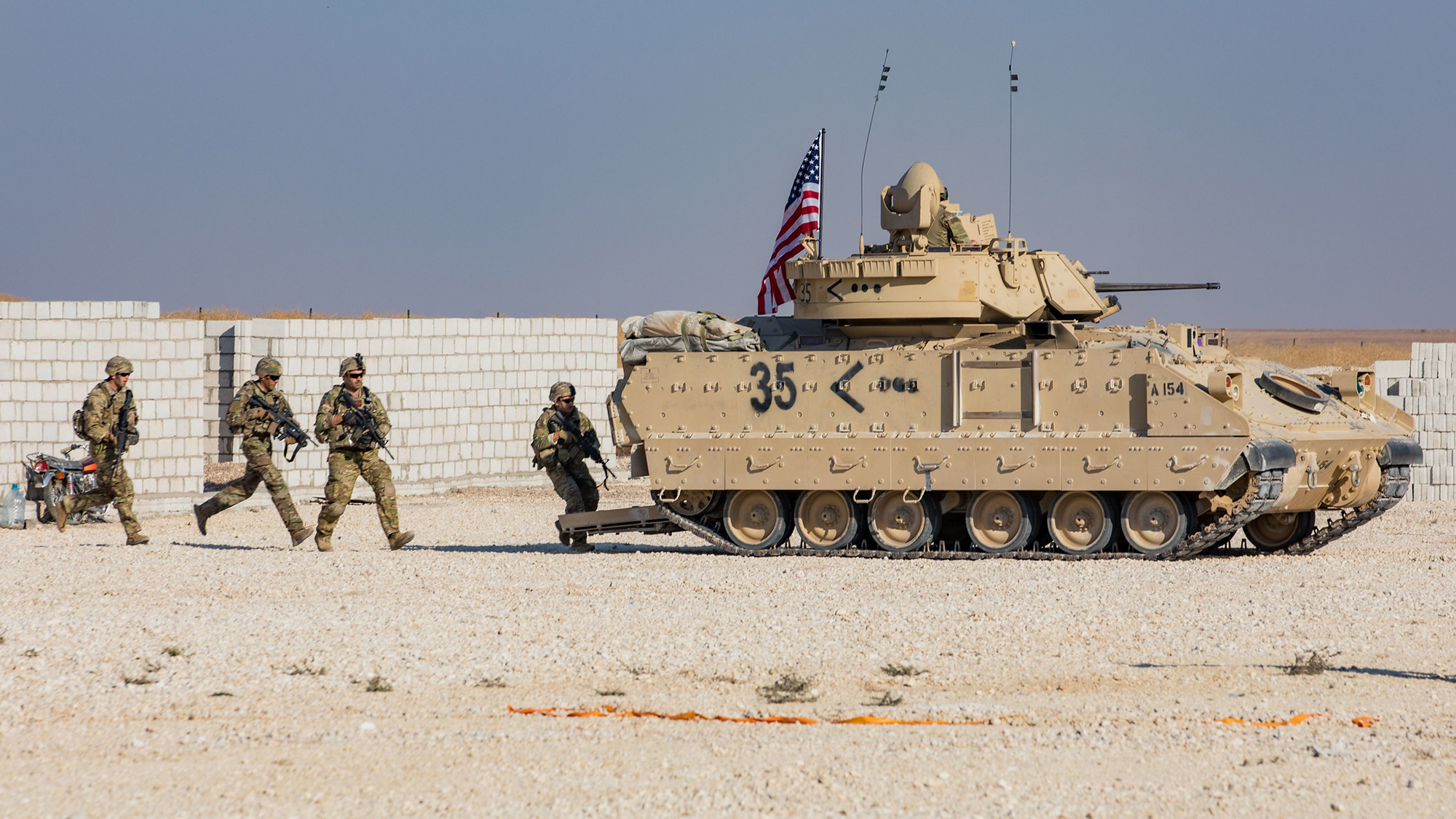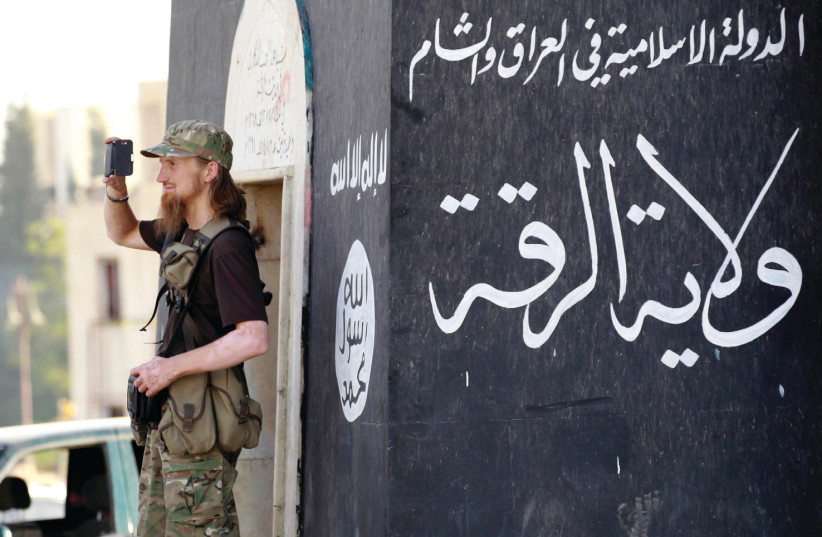What is the U.S. involved about in the area along the Iraqi and Syrian border, and why are they responding with airstrikes at this time in individual?
Iran-backed militias are functioning in Iraq and have been concentrating on American forces who have been deployed to Iraq in a counterterrorism advising mission for decades. Due to the fact at the very least 2019, these militias have released rockets to hit bases where by American forces are stationed, advising Iraqi forces on countering ISIS. These attacks have killed at minimum four Us residents and dozens of Iraqi troopers. Given that April, these Iran-sponsored armed groups—colloquially called proxies—have been implicated in a sequence of new varieties of attacks, specifically dive-bombing-drone attacks on bases in Iraq hosting American navy advisors. The use of drones is new, and a lot of analysts and media sources attribute these attacks to Iran-backed militia groups, tracing remaining drone components to Iran.
The use of drones by these militias is new, but there is a extended record of these militias focusing on U.S. forces, as far again as the Iraq War. American officials have claimed that the most recent U.S. strikes on weapons depots and militia bases along the Iraq-Syria border are in reaction to this escalatory use of drone strikes by the proxies. Lots of of them harbor amenities on the Syrian side of the Iraq border, where they are ready to plan and undertaking assaults into Iraq. This is in section for the reason that, considering the fact that the early years of the Syrian civil war, Iran has facilitated transport and supplies for the militias to get involved in Syria, to support the Syrian regime counter the revolution and get back energy there.
What can you tell us about the militias whose services were struck, Kata’ib Hezbollah and Kata’ib Sayyid al-Shuhada?
Both equally are Iraqi Shia militias that have been given funding, navy materials, and advising from Iran, particularly its Islamic Revolutionary Guard Corps, or the IRGC, which is the most important arm of the Iranian army that manages its community of proxies in the area. In the latest decades, both equally militias have operated in Iraq to roll back ISIS and in Syria to safeguard the Syrian routine. They’ve both of those opposed American troop presence in Iraq for a lot of many years.
Kata’ib Hezbollah, or KH, was established in 2003 and was implicated in a ton of assaults versus U.S. forces for the duration of the Iraq War. It’s been a longtime Iran-sponsored Iraqi Shia militia, and these days it was included in battling ISIS in Iraq, as section of the Popular Mobilization Forces, which comprise an auxiliary arm of the Iraqi safety forces.
KH was implicated in rocket attacks that provoked a reaction by the Trump administration in December 2019, when the Trump administration hit their headquarters in a considerably western Iraqi city alongside the border with Syria. In reaction, KH supporters protested and stormed the U.S. embassy compound in Baghdad. You may possibly remember the harrowing visuals of the compound getting surrounded.
That incident was a precursor to a decision a several days later by the Trump administration to start an airstrike on and eliminate the IRGC commander Qasem Soleimani in January 2020. As section of that strike, the longtime chief of KH’s militia was also killed. The strike on Soleimani precipitated a standoff that culminated in Iranian missile strikes on U.S. bases in Iraq, wounding numerous U.S. soldiers and causing the dying of 176 folks in Ukrainian Airways flight 752 when Iran mistakenly shot it down, mistakenly fearing an American aerial assault.
Kata’ib Sayyid al-Shuhada was founded in 2013, quite possibly as a splinter from KH. It is a more recent group also operating in equally Iraq and Syria, so there’s considerably less facts about this team, but it also operated out of some of the targets that this newest U.S. strike strike.
How will the U.S. strikes and response influence the U.S. and Iran’s endeavours to re-enter the nuclear offer?
The primary nuclear deal with Iran precisely scoped out the interactions that Iran has experienced with proxy teams through the region, in order to emphasis on the nuclear concern. But as element of the new negotiations in between Iran and the United States, the Biden administration has expressed a motivation to not automatically fold in the proxy issue but to inspire Iran to start discussions for a abide by-on settlement to control their support to these groups.
There’s a great deal of pressure, in particular from the Gulf states, to demand that Iran agree to prevent giving the proxies as part of the new deal, forcing Iran to come to phrases on the nuclear method, its ballistic missile plan, and its proxy program. My impression is that the Biden administration is seeking to occupy a center ground there.
Nonetheless, a new round of negotiations for the new offer have basically been ongoing because April, accurately when Iran-backed militias reportedly commenced applying drones in their assaults on bases.
Each the United States and Iran look dedicated to at minimum conversing about reentering a nuclear deal. They both have an curiosity in coming to the table. Iran desires sanctions to finish, and the Biden administration has committed to renegotiating a nuclear offer and avoiding Iran from getting a nuclear weapon.
The truth that they are both incentivized to appear to the desk means that they also have both of those have incentives, if not essentially to end the tit-for-tat cycle of violence, to retain that form of violence from escalating into higher tensions or a far more sustained confrontation, like we saw in January 2020, which could have the prospect of spoiling talks.
Some American lawmakers are questioning the sustained presence of troops together the Iraq/Syria border. Does the U.S. nevertheless require them there?
The Biden administration introduced an interim national safety direction that still identifies terrorism as a significant and enduring menace in opposition to Individuals and also in opposition to American allies. They vowed in the steerage to especially perform with partners to disrupt and deny attacks by terrorist groups like ISIS, for case in point, from launching attacks into the United States and the territory of American allies.
In accordance to the Protection Office, the mission of remaining U.S. troops in Iraq and Syria (about 2500 troops in Iraq, and about 900 troops in Syria) are to suggest and support Iraqis and Syrian companions to enable them root out ISIS cells and stop an ISIS resurgence.
The Division of Protection is conducting a drive posture evaluation of navy deployments, including Iraq and Syria and other advising missions which happen throughout the globe, especially for counterterrorism explanations. They may well feel the need to regulate troop concentrations yet again in accordance to their desires and the needs of companion forces. The Iraqi Federal government has requested the existence of advisors the Syrian Democratic Forces have also requested the continued existence of U.S. troops to maintain a tamp down on ISIS.
The query is, What do we assess as the most important threat of ISIS and the price tag of continued advisors on the ground, vs . the value of eliminating those advisors and the capacity of neighborhood husband or wife forces to carry on? It is an open question that a great deal of scientists have attempted to respond to and there is a good deal of disagreement about it. I’m absolutely sure we’ll see ongoing debates in Congress.
What is the most essential point for folks to have an understanding of about what is going on in the location?
Just one detail to bear in mind is that the American strikes are not isolated. They are section of a larger sized pattern of tit-for-tat strikes. These militias have propelled rockets or drones against U.S. forces, and the U.S. military has responded relationship back again lots of a long time. In a day right after the hottest American strikes towards the targets alongside the Iraq-Syria border, militias retaliated by launching rockets at U.S. forces in Syria.
The next point to retain in intellect is why Iran is sponsoring these teams. Analysis on why states sponsor armed groups demonstrates that launching attacks by proxies as opposed to directly attacking is frequently finished to steer clear of escalation. Iran is aware it can not match America’s military services superiority in the area and in common, and for that reason takes to considerably less high priced and additional asymmetric strategies like assaults by proxies to advance its interests.
These assaults are low-priced they only involve a couple fighters to launch them and since they induce limited problems proportional responses by the target, in this situation the United States, would also probably be confined. These minimal-stage assaults are normally supposed not to escalate.
That brings me to the last stage that these events are not just in between Iran and the United States. We need to retain that in intellect in two strategies. The initially is that the intermediaries are Iraqi militias, so in spite of their one-way links with the Iranian IRGC they have their own passions as Iraqis in opposing the American existence in Iraq, with or without having Iranian help. Iranian assistance is obviously generating it less difficult for them and enabling them to assault, probably supplying them with new thoughts and information and facts to act on. But I have a difficult time believing that if Iran ceased supporting them that the difficulty would go away.
It’s also essential to retain in brain that this violence is not just among Iran and the U.S. due to the fact the Iraqi authorities and the Iraqi individuals are in the middle. The Iran-backed militias concentrate on American forces on Iraqi bases, and Iraqi forces have suffered the optimum casualties from these assaults. American choices to strike these militias in Iraqi territory (1 of the 3 targets in the very last American strike was on the Iraqi aspect of the border) have also brought on consternation from the Iraqi authorities, which has claimed U.S. forces did not look for authorization and objected to additional violence in Iraqi territory.
Iraqis are caught in the center.












